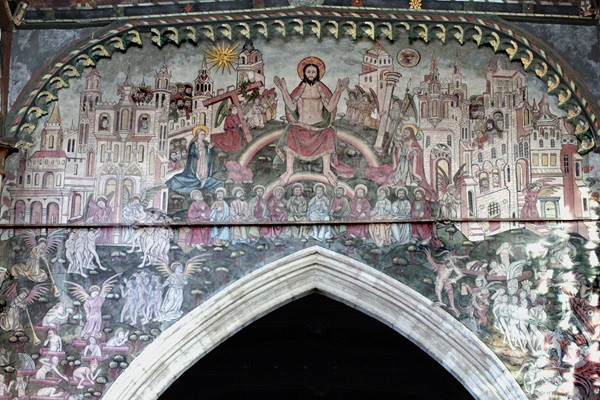Advent was developed as a season of the church year in the late fourth century. It was widely practiced across Christian churches worldwide by the sixth century.
The church developed Advent to provide an additional season of fasting and an alternative time for the final preparation of candidates for baptism. The normal three-year preparation period included a final forty days of intense preparation during Lent. Baptism would follow at Easter.
A second season of baptismal preparation was more needful after the Roman Emperor Theodosius made Christianity the legal religion of the Roman Empire in 380. At that time, approximately 15% of the Empire was Christian. After 380, the vast majority of citizens sought to become Christian. A single season could not accommodate all of those preparing for baptism.
Advent means “coming” or “arrival.” The focus of Advent is on Christian life now in light of the culmination of all things at Christ’s second coming. By focusing on last things, baptismal candidates were reminded of the need for Christ to come again to make all things new as they prepared to begin their new lives in Christ.
Baptism would typically occur at Epiphany, the end of the Christmas Season when Christians remember the coming of the Magi and celebrate the baptism of Jesus. This is why many older baptismal fonts include depictions of the Magi bringing gifts.
Similar to Lent, Advent developed as a penitential season of varying lengths. By the eighth century, Advent was generally observed for six weeks in the East (as it is to this day) and seven in the West. By the 12th century, it became shortened in the West to four weeks.
Advent was part of the practice of the Church of England when John Wesley was a priest. When he revised the liturgical calendar for use by American Methodists in 1784, he kept Advent and its four Sundays. So, Advent was part of Methodist ritual from the beginning.
However, the 1792 General Conference dramatically simplified the ritual, removing nearly all of the church calendar and the associated readings for each Sunday. As a result, Advent became a “lost practice” among most American Methodists for well over a century. While a few hymns related to Advent were retained, it wasn’t until 1965 that specific ritual resources for Advent were included in The Book of Worship of The Methodist Church.
By the time Advent was restored to Methodist and Evangelical United Brethren practice in the mid-20th century, there were other significant developments in the cultural practices of Christmas that impacted Advent in our congregations. The Christmas season as a cultural practice was no longer the 12 days beginning with Christmas Eve. Instead, it had become the nearly 30 days from American Thanksgiving to Christmas Eve. This meant that even though the 1965 Book of Worship included readings and prayers focused on the second coming of Christ, many congregations expected Advent to conform to the cultural Christmas focus on the birth of Jesus.
By 1992, United Methodist liturgy and an expanded selection of Advent-specific hymns all helped United Methodists understand and reclaim the original focus of Advent on the second coming of Christ. And Come to the Waters, the primary United Methodist resource for preparing candidates for baptism, includes guidance for using Advent as a season for final preparation for baptism.
United Methodists now have many rich resources to help us observe the fullness of what our Christian ancestors created the Advent season to do. We can help others prepare for baptism as we contemplate together the destiny of the universe when Christ comes in glory and then, during the Christmas Season, celebrate the gift of new birth and all that continues to unfold as we remember the birth of God with us.
This content was produced by Ask The UMC, a ministry of United Methodist Communications.





